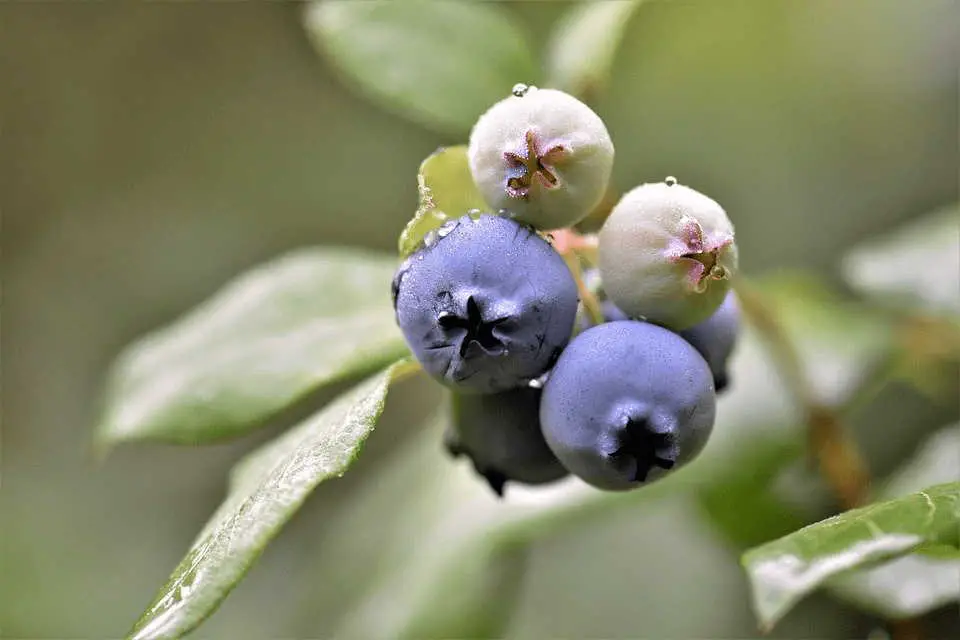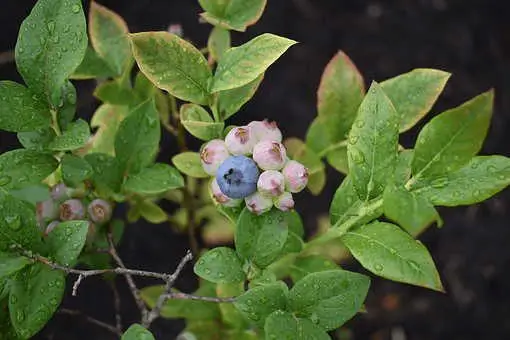If you don’t have an expansive backyard to grow your favorite fruits, or the harsh winters in your region do not support perennials, growing blueberries indoors as a houseplant is a good option. Yes, if you love berries, you’re lucky since blueberries are one of the easiest fruits to grow indoors all year-round.
As long as you choose the correct variety to plant indoors, find it a nice, sunny spot and give it all the right conditions, you can have a beautiful blueberry bush right on your windowsill. If you give it everything it needs, there’s no reason why you can’t have a handful of berries to grab off your potted bush before heading to work!
Reader Poll: What online courses would interest you?
So how do you get started with growing blueberries indoors and help it thrive all year-round? Here’s a complete guide to planting and care for your indoor blueberry bush.

Which Varieties Are Best For Growing Indoors?
The first question that may pop up in your mind, and an important one, is which blueberry varieties will make the best houseplants? The usual highbush varieties can grow up to 6 feet tall and 6 feet wide, unsuitable for growing indoors.
Your best bet is to go for lowbush blueberries or dwarf varieties. Lowbush blueberries are native to the northeastern US and grow close to the ground. They won’t take up much space in your living room and will grow into a small, easy-to-maintain indoor bush.
Subscribe to our newsletter!
Here are some of the most common dwarf blueberries you can grow indoors:
- “Top Hat” varieties are the most popular options for indoor growing since it’s a dwarf blueberry bush that only reaches a height of 24 inches. It works well in warm climates.
- “Northsky” is a lowbush blueberry variety that can grow in the cold and reaches a height of 18 inches.
- “Northblue” is another is a lowbush blueberry. It takes a bit more space, reaching about 40 inches but yields more than most other dwarf varieties.
- “Sunshine Blue” is a semi-dwarf variety and reaches a height of 48 inches.
How Do You Start Growing Blueberries Indoors: Seed Or Seedling?

If you start from seed, you’ll have to wait at least 2 to 3 years to see any berries on your plant. Most growers choose to propagate it from cuttings brought at the nursery or purchase a year-old plant. Even though they’re self-pollination, grow at least two to encourage cross-pollination, and enjoy a bigger yield. Plant a different variety that blooms at around the same time in another pot and place it close by.
Prepare The Pot
Choose a container with a depth of at least 15 to 18 inches for growing a single blueberry plant. You can also start with a smaller container and re-pot it as the plant grows bigger. Since they don’t have a big root system, they won’t require a pot bigger than this size and will easily fit on a window sill. Make sure the pot has drainage holes at the base before you fill it with soil.
Blueberries thrive in well-drained, fertile soil with a pH between 4.0 and 5.0. Since blueberries love acidic soil, the regular potting mix isn’t the best choice. Adding peat moss, sulfur, or pine bark will make the soil acidic. The best medium for your potted blueberry bush is a 50-50 mix of peat moss and potting soil. If you’d rather prefer pre-prepared bagged soil, go for those labeled for azaleas and hydrangeas.
Transplant the nursery plant into the pot you just prepared, planting it to the same depth as it was in the original pot. Cover the roots with soil and water well.
Indoor Blueberry Bush Care

Indoor blueberry bushes will require a bit more attention than outdoor ones. Unless they enjoy their preferred conditions, they won’t give you as many blueberries as you’d expect from an outdoor plant. In an unsuitable environment, they might not produce at all. Here are some of the things you need to be particular about:
Light
Blueberries are sun-loving species. Typically, they need about 6 to 8 hours of direct sunlight to grow their best. Place them at a window that gets plenty of direct sun throughout the day. Though they’ll tolerate fewer sunlight hours, the yield will drop. If you don’t have a sunny window, you can install LED grow lights over them.
Water
Blueberries are very sensitive to dry soil. Water regularly, keeping the soil evenly moist but not too damp. In summers, you may need to water the pot daily to keep it moist. Poke your finger in the soil; even if the topsoil feels slightly dry, it’s time to water the plant.
Fertilizer
During the first year, feed every few months with an acidic organic fertilizer as directed on the package. Cottonseed meal or feather meal are good options for indoor blueberries. After the first year, you can start feeding monthly with light doses of organic fertilizer.
Temperature
Different varieties have different temperature requirements. Lowbush varieties prefer cooler climates. Most blueberries need a few months of cold temperatures (chilling hours) to go dormant before blooming and fruiting. You may need to move it to a colder spot, such as an unheated basement, for the winters.
Pruning
After a couple of years, once the plant is mature, you’ll need to prune it lightly each year to promote yield and keep it from invading your space. The best time to prune is in autumn, once you’ve harvested all your berries for the season. Remove all the weak, dead, and low-hanging branches. Also, remove the older canes, since they’re not going to be as productive as the newer ones.
Harvest
There’s nothing more satisfying than picking berries off your window blueberry bush – years of waiting will ultimately pay off! The clusters will ripen at different times. Pick them once they’re entirely blue. You can leave them on the bush for as long as ten days once they’re completely ripe.
Thanks for reading please let me know any feedback or questions in the comments below.


Wonderful information … I will definitely try to grow an indoor blueberry plant!!
Thanks for the feedback Karen, good luck and please send us some photos and I will add it to the page.
Do indoor grown blue berries have to have a period of dormancy every year? I wish to keep my baby blue berries in for the first winter (we usually get to -40 up here in the Northwest Territory) and then put them outside next summer. If they need a dormant period how would I go about creating the proper conditions for this time period/ Thank you for your help.
It’s great to hear from you Guy! Yes blueberries should be made to have a dormant period every year. As your winter temperatures are so low putting them outside is ruled out. I have had a think and a few suggestions. Do you have the option of a cold windowsill maybe in a spare room that you can turn the heating off in. Or a garage where is not as cold and free from frost. It would just be for about a month or so.
Hi Greg –
I’ve had a top hat blueberry plant for 2-3 years now. I had it outside (Pittsburgh, PA) late spring through fall and then brought it indoors to a sunny window. Never flowered outside, but it has been flowering ever since I brought it indoors; however, the fruits dry up and fall off before forming (and the old bud areas are sticky). Is it not good practice to move indoors and out? Should it go in the cold garage for a spell? Any advice would be most appreciated. Thanks! Susan
Hi Susan, great comment!
I am surprised you haven’t had any fruit on your blueberry plant yet do you know what variety it is? it may just be more suited to warmer temperatures if this is the case then bringing in into a cold garage over winter may help it to stay dormant then bringing it indoors over summer may encourage it to flower and fruit. As for the sticky buds, it may be that you have a pest problem give the leaves a closer look or treat them with soapy water spray a few times to see if it clears it up. Good luck and would like to see photos to put up to see if other readers have this problem.